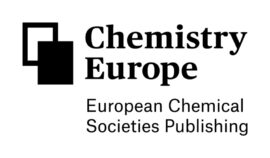 Maike Baltussen (TU/e) is an Assistant Professor at the research group Multiscale Modelling of Multiphase Flows of Prof. Hans Kuipers in Eindhoven.
Maike Baltussen (TU/e) is an Assistant Professor at the research group Multiscale Modelling of Multiphase Flows of Prof. Hans Kuipers in Eindhoven.
Read more about Maike Baltussen on the website of TU/e
What do you do?
I’m specializing in simulating gas-liquid and gas-liquid-solid flows using mainly Direct Numerical Simulations. Within MCEC, I work on the flow in trickle beds and riser reactors. Besides, we are working on the formation of droplets in a spray dryer. Finally, soon a project on water electrolysis is starting.
A new sub-grid scale method
Besides these projects, my personal focus is trying to investigate the mass transfer from single bubbles. I have been developing a new sub-grid scale method, which enables us to simulate high Schmidt numbers. Currently I’m trying to extend this to multiple bubbles and bubbles interacting with structures.
Length and time scales
The main challenge in performing numerical simulations without rigorous assumptions is covering all the relevant length and time scales. For example, the boundary layer in mass transfer is much smaller than the hydrodynamic boundary layer (about 10-30 times). To resolve it, we have to create a higher resolution, which will result in a high grid count or very slow simulation (waiting for several months).
Future collaboration
The next step in multi-scale modelling of gas-liquid and gas-liquid-solid models is to optimize the code even further. This will enable us to model more realistic systems. In addition, the current models are only including simplified kinetics. To create a more realistic model, we have to include the realistic kinetics.
To include these, I think collaboration is of high importance. Currently I am collaborating with Ivo Filot, using his microkinetic modelling to include the essential kinetics in our reactor models. Combining this with the heat and mass transfer in our models, will enable us to make a realistic prediction of a real reactor.

